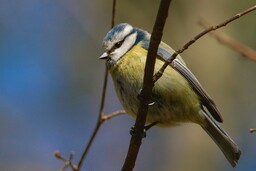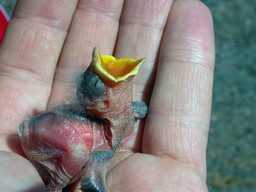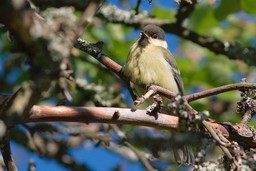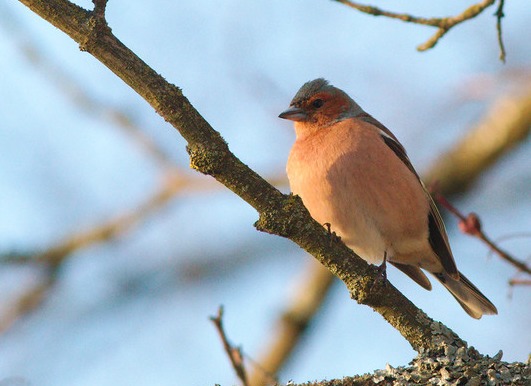6. Birds
Why are there so many birds in the park?
 Parks provide birds with a perfect living environment, full of food and places to nest. Many bird species have learned to live in parks. Crows, jackdaws, pigeons and sparrows can be found in almost all parks.
Parks provide birds with a perfect living environment, full of food and places to nest. Many bird species have learned to live in parks. Crows, jackdaws, pigeons and sparrows can be found in almost all parks. During the summer, you can see birds such as wagtails and thrushes searching the park grass for worms. The foliage of park trees provides many small birds, such as various tits, with a safe living environment.
Indeed, parks are surprisingly full of various bird species. There are many reasons for this, including the following:
- Many birds have learned not to be afraid of humans.
- Birds have learned to search for scraps of food left in the park by humans.
- The nest boxes placed on the trunks of park trees attract small birds to nest in the park.
A great tit in its nest
Tits are sedentary birds
The blue tit and the great tit are examples of sedentary birds. This means that they live in the same area throughout the year. During the spring, the tits hunt for insect larvae, which they feed to their offspring. During the winter, the tits mostly eat nuts. Because of this, they are regular visitors at the birdfeeder.
Like its name suggests, the blue tit has a blue head and back. It thrives in broadleaf forests, which is why it can also often be found in parks. Park trees offer the great tit shelter, food and nesting places.
During the spring, the great tit begins singing its easily recognizable song. By singing, the male tit attempts to attract a female tit to reproduce. The blue tit builds its nest in a hole, which can be found in a tree or in a nesting box. In May, the female blue tit can lay up to 14 eggs.
Like its name suggests, the great tit is larger than the blue tit. It is easily recognizable by its black and white head and its yellow and black belly.
Like its name suggests, the blue tit has a blue head and back. It thrives in broadleaf forests, which is why it can also often be found in parks. Park trees offer the great tit shelter, food and nesting places.
During the spring, the great tit begins singing its easily recognizable song. By singing, the male tit attempts to attract a female tit to reproduce. The blue tit builds its nest in a hole, which can be found in a tree or in a nesting box. In May, the female blue tit can lay up to 14 eggs.
Like its name suggests, the great tit is larger than the blue tit. It is easily recognizable by its black and white head and its yellow and black belly.
A blue tit in the winter.
Park tits
Sparrows
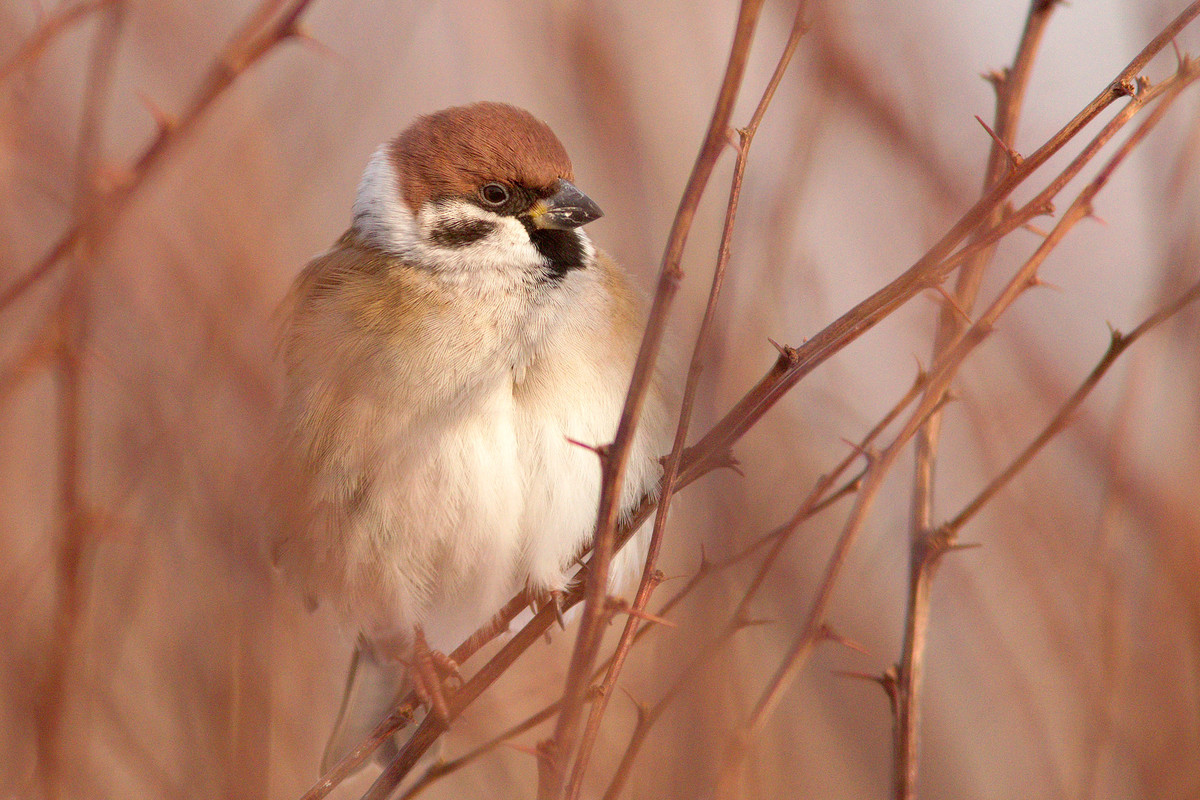 The sparrow and the tree sparrow are small birds that usually spend time in flocks. By grouping together, the sparrows are safer from predators.
The sparrow and the tree sparrow are small birds that usually spend time in flocks. By grouping together, the sparrows are safer from predators. Both the sparrow and the tree sparrow are seed-eaters.
The tree sparrow (on the right) can be distinguished from the common sparrow (alla) by its brown forehead and white cheeks. The cheek of a tree sparrow also has a small, black dot, unlike that of a common sparrow. Both male and female tree sparrows look alike.
The sparrow can usually be found near thick hedges and shrubberies. The tree sparrow can likewise be found near thick shrubberies, but it also enjoys spending time in trees.
On the right: a tree sparrow. Below: a common sparrow.
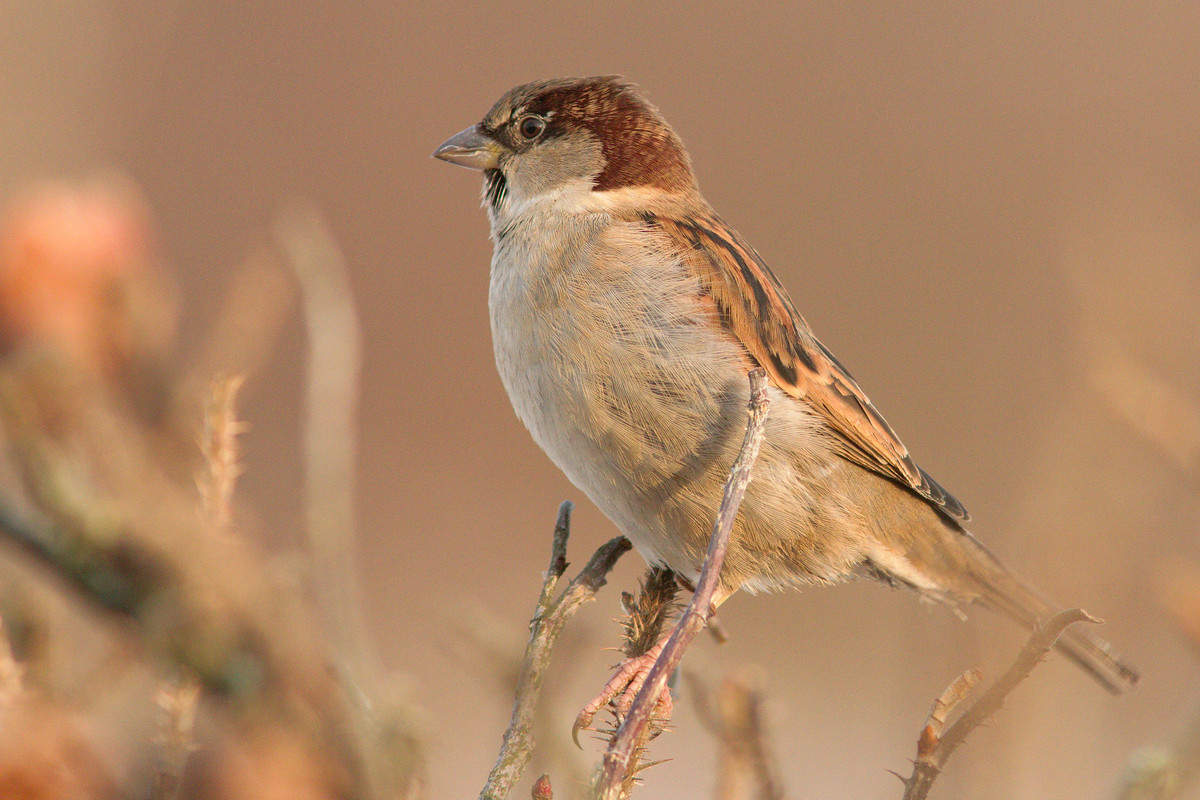
The chaffinch
The chaffinch and the wagtail are the most common park birds. When you compare them with one another, you will quickly realize how different they are in terms of their structure and behavior.
The chaffinch is a seed-eater. This can be seen in its beak, which is sturdy and suited for cracking hard seeds. During the autumn, the chaffinch is in no hurry to fly south, as seeds are still widely available. However, the chaffinch is still a migrating bird. Chaffinches spend the winter in Western Europe, and return to Northern Europe in the spring.
When two chaffinches form a pair, they make a safe, hidden nest in a tree, usually a birch. The chaffinch feeds its offspring by bringing them insects and seeds.
The chaffinch is a seed-eater. This can be seen in its beak, which is sturdy and suited for cracking hard seeds. During the autumn, the chaffinch is in no hurry to fly south, as seeds are still widely available. However, the chaffinch is still a migrating bird. Chaffinches spend the winter in Western Europe, and return to Northern Europe in the spring.
When two chaffinches form a pair, they make a safe, hidden nest in a tree, usually a birch. The chaffinch feeds its offspring by bringing them insects and seeds.
The wagtail
The wagtail is an insect-eater. This can be seen in its beak, which is long and thin, and therefore suitable for catching small insects. The wagtail is a common park bird
The wagtail is also very quick in its movements: a slow bird will never catch insects!
The wagtail is also very quick in its movements: a slow bird will never catch insects!
The wagtail only spends its summers in Northern Europe. During this time, it usually has time to lay eggs two separate times. The wagtail constructs its nest in a sheltered, covered location, such as under the eaves of a building.
During the early autumn, the wagtail migrates to Southern Europe and Africa. It returns to Northern Europe in the spring.
Pigeons
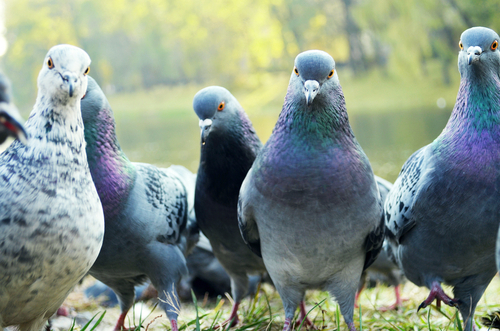 Two different species of pigeon can be found in cities and other urban areas. The common pigeon is often seen near marketplaces and busy streets (on the right).
Two different species of pigeon can be found in cities and other urban areas. The common pigeon is often seen near marketplaces and busy streets (on the right). The common pigeon's coloring can vary greatly. Some pigeons are white, whereas others are colorful. Some pigeons have an even gray color, whereas some can have small spots.
The wood pigeon (below) has become more common during the recent years. It can be recognized by a white spot in its neck. The wood pigeon thrives in forests and parks.
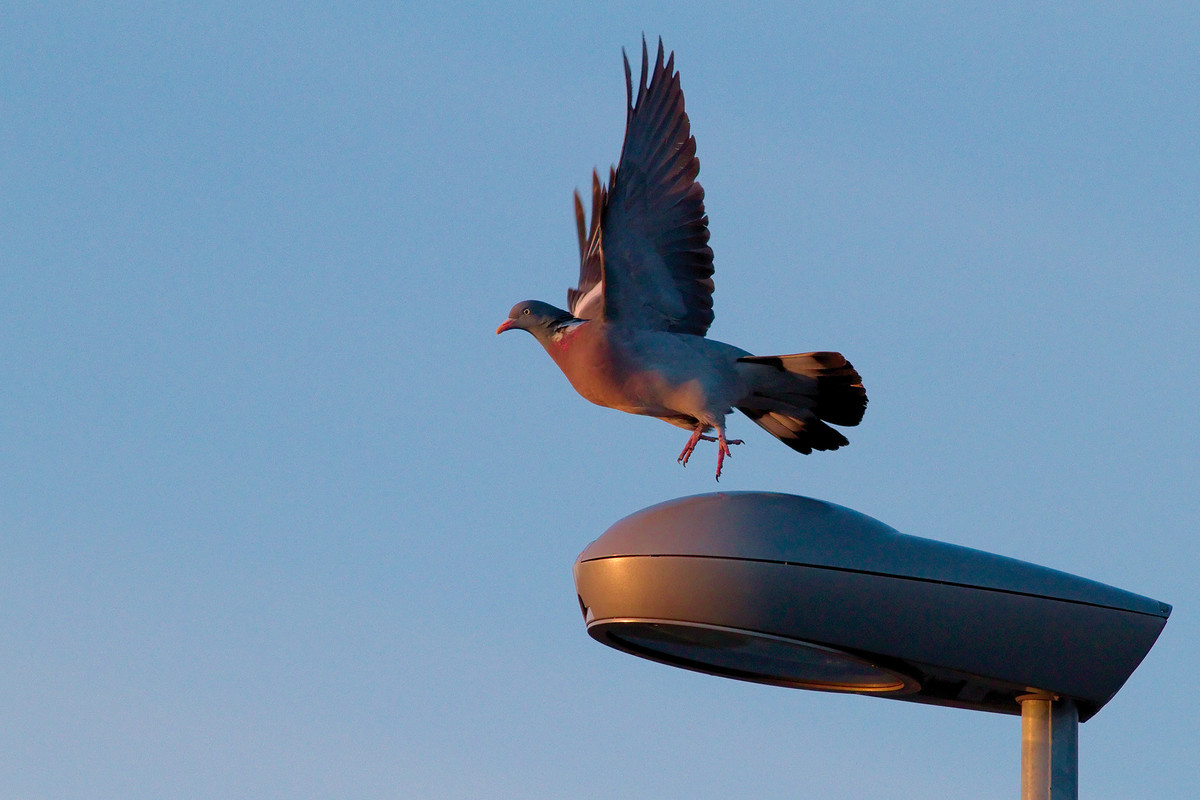
The wood pigeon can be identified by white spots on its neck and wings.
Thrushes
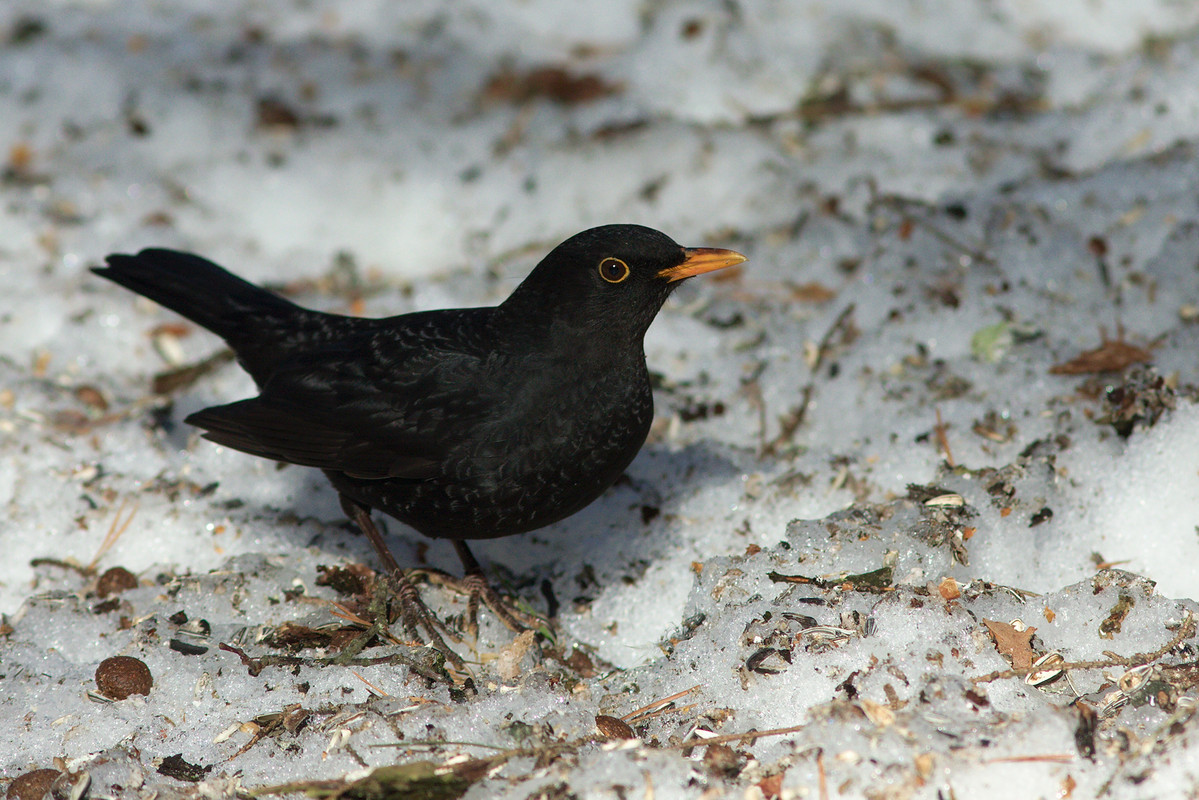 Thrushes are often seen in parks during the summer months. The most common thrush species are the blackbird and the fieldfare.
Thrushes are often seen in parks during the summer months. The most common thrush species are the blackbird and the fieldfare.The blackbird begins singing in early March. Some blackbirds spend the winter in their nesting regions, whereas some migrate to Western Europe.
The blackbird produces several broods during the summer. It begins nesting in the early spring.
The feathers of the male blackbird are completely black. It has a yellow beak. The female blackbird has a brown feathering.
The blackbird eats worms, snails and insects. During the winter, it eats seeds and berries. The blackbird builds its nest in a sheltered location, usually under a shrub.
A fieldfare has found a worm.
The fieldfare nests in colonies. In fieldfare colonies, several pairs of birds make their nests in the same tree or two nearby trees. The fieldfares protect their nests together. This helps to keep unwanted visitors, such as squirrels and magpies, away.
The fieldfare eats worms, snails and insects. During the late summer, the fieldfare begins searching for berries, such as blueberries and strawberries.
The fieldfare nests in colonies. In fieldfare colonies, several pairs of birds make their nests in the same tree or two nearby trees. The fieldfares protect their nests together. This helps to keep unwanted visitors, such as squirrels and magpies, away.
The fieldfare eats worms, snails and insects. During the late summer, the fieldfare begins searching for berries, such as blueberries and strawberries.
Birds of the crow family
 The grey crow, the black jackdaw and the black and white magpie are all members of the crow family.
The grey crow, the black jackdaw and the black and white magpie are all members of the crow family. Birds of the crow family are relatively large, exceptionally social and very smart. Because of these qualities, the birds of the crow family have adapted well to living in urban areas. Crows, jackdaws and magpies can be found in parks throughout the year.
The crow (pictured on the right) is a grey bird with black wings and a black head.
The jackdaw lives in flocks. It is completely black and grey in color. Nowadays, the jackdaw is very common in cities and towns.
The magpie has a long tail and is black and white in color. It is not as common as the jackdaw, but it can often be seen on the outskirts of urban areas.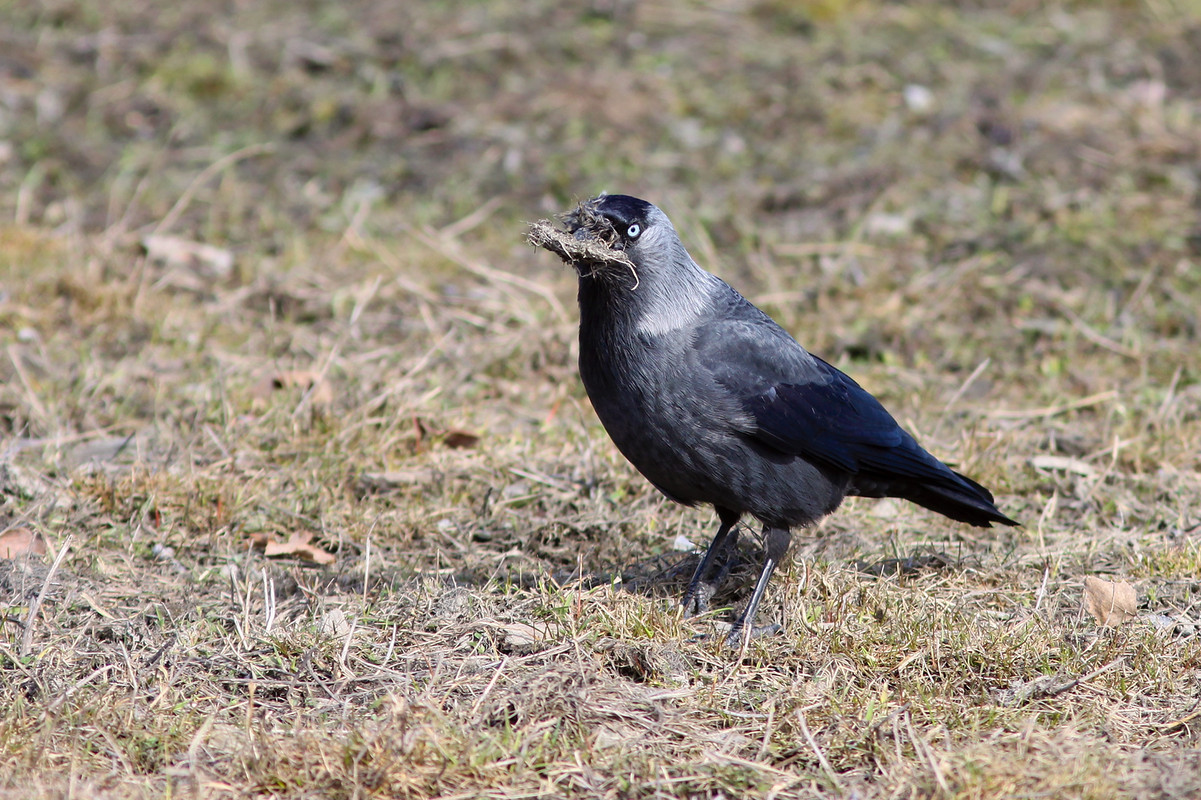
The magpie has a long tail and is black and white in color. It is not as common as the jackdaw, but it can often be seen on the outskirts of urban areas.

The jackdaw.
Terminology
| Term | Explanation |
|---|---|
| sedentary bird | A bird species that spends the whole year in the same location, and does not migrate. |
| seed-eater | A bird that eats seeds and has a large, sturdy beak. |
| insect-eater | A bird that eats insects and has a thin, long beak. |

